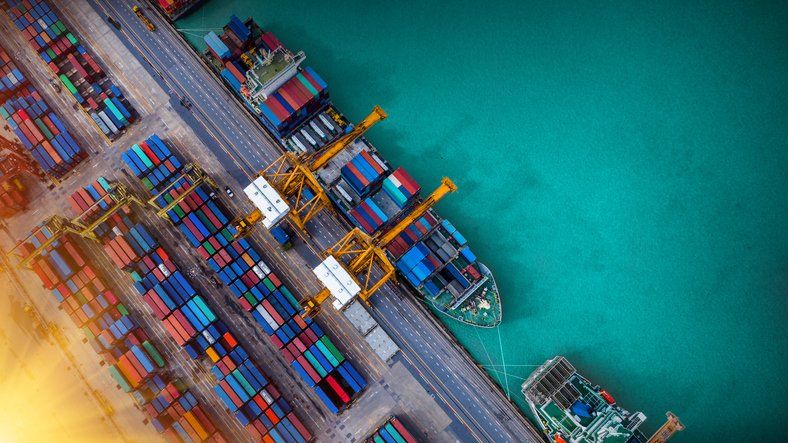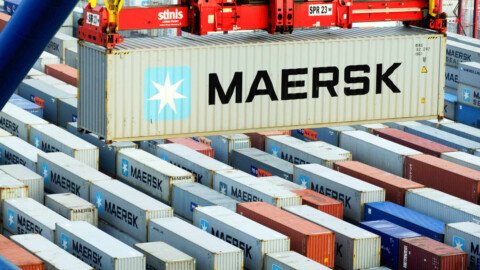The past few years have seen a steady decline in Asia’s share in India’s export basket accompanied by an increase in trade with countries in the west. This is likely because India is pulling away from trade partnerships in the east and looking to establish new trade relations in relatively under-tapped markets in western countries.
The Indian government withdrew from the Asia-Pacific Regional Comprehensive Economic Partnership (RCEP) in November 2019 due to the assessment that Indian exports were not flourishing to the region despite reduced non-tariff barriers (NTB) as ASEAN nations and India offer similar labor-intensive products in their export basket.
There has also been a shift in the approach towards global trade as India looks to build up trade exposure with western countries, a somewhat interesting development following geopolitical events like the US-China trade war, recent Australia-China trade tensions, and BREXIT. Free trade agreement (FTA) negotiations are currently ongoing or planned to start in 2021 with the UK, European Union (EU), USA, Australia, and UAE. Both, the EU and UK are keen to re-establish their credentials as strong trade partners to India — eyeing its large consumption market and growing disposable incomes besides wanting to expand sourcing destinations.
India’s foreign trade policy
Once again postponed from October 2021 to March 2022, the next Foreign Trade Policy (FTP) (following FTP 2015-20) wants to grow India’s annual good and services exports to over US$1 trillion by FY 2026-27.
The new FTP is much awaited as it will offer government-supported strategies to cash in on the expected rebound in global economic growth.
Key objectives will include ensuring India’s greater integration with the global supply chain and reducing logistics costs.
Incentive schemes
The government remains supportive of incentive schemes. However, it has been working to revamp existing export schemes so they are in sync with WTO stipulations.
The Service Exports from India Scheme (SEIS) is expected to be revamped with a wider coverage of businesses, offering exporters Duty Credit Scrips (DCS) at five to seven percent of the net foreign exchange earned.
For merchandise exporters, Remission of Duties and Taxes on Exported Products (RoDTEP) is expected to be a part of the new FTP, which offers reimbursement of central, state, and local taxes/duties. It replaces the previous Merchandise Export from India Scheme (MEIS), which was not compliant with WTO rules.
Currently, negotiations are underway to expand the beneficiaries of RoDTEP. This is because there has been much disappointment among industry and trade stakeholders (and are key to the country’s export base) who have been left out of the remit of the new RoDTEP scheme, such as pharmaceutical, steel, and chemical industries; export-oriented units (including bio-technology parks and electronic hardware technology parks); Special Economic Zones (SEZs); Free Trade Warehousing Zones (FTWzs) and custom bonded warehouses operating under the Manufacturing and Other Operations in Warehousing Regulations, etc.
Another trade promotional scheme is the Export Promotion Capital Goods (EPCG), which facilitates the import of capital goods for manufacturing to augment the competitiveness of India’s exports.
Bilateral trade pacts
Following its withdrawal from the RCEP, India is actively working to forge new trade partnerships with other countries.
India has launched negotiations with the UAE, aiming to conclude trade talks and sign a mutually beneficial Comprehensive Economic Partnership Agreement (CEPA) by March 2022. The CEPA deal aims to improve bilateral economic relations, expand existing trade and investment relations, and could be a stepping-stone to expanding India’s trade ties with the UAE’s neighboring Gulf countries – presently dominated by energy items.
Progress is also being made around an India-EU free trade agreement as negotiations resumed after an eight-year halt. Political convergence on key regional and global issues provides background support as formal talks on two key pacts on investment protection and geographical indications began in September.
Meanwhile, India-UK talks are set to enter a new stage in November, with hopes to reach an Interim Agreement by March 2022, followed by a Comprehensive Agreement.
While it seems that foreign trade is on path to recovery, COVID-19 has certainly affected the ambitions of countries worldwide. The pandemic necessitated national spending to boost exports and foreign trade, but that has stretch government budgets thin, including India’s.
Even prior to the pandemic, India faced massive capital requirements to improve infrastructure, R&D, logistics, etc. to establish a competitive advantage over Asian and global rivals. Consequently, it has liberalised market access and since last year, launched sector-specific incentive (PLI) programs to develop industrial ecosystems around key product segments.
India’s government has its priorities well laid out and plans to work consistently on removing long-standing obstacles to boost jobs creation, trade growth in services and merchandise, and privatisation through investment facilitation.
Expanding trade flow, Diversifying tradable
Experts predicted foreign trade to bounce back in FY 2021-22. Now in Q3 FY 2021-22, recovery is afoot with exports growing to US$33.1 billion in August, 45 percent higher than this period last year. Since the beginning of the current financial year, exports have amounted to an estimated US$163 billion. The target for exports for the current financial year is set at US$400 billion, and one India is set to achieve.
According to India’s Minister for Commerce and Industry, Piyush Goyal, last year, India’s services export was US$194 billion, and goods were US$290 billion. He was quoted saying to the Economic Times, “We would like both services and goods exports to compete with each other and together reach the US$2 trillion mark.”
Goyal emphasised that the export target for the textiles sector was US$44 billion. He also brought attention to the fact that India is trying to diversify its trade portfolio; cotton and cotton-based textiles dominate Indian exports, but work is underway to shift to man-made fiber and technical textiles, which now dominate international textiles trade.
In a related development, India recently unveiled its Production-Linked Incentive (PLI) scheme for these segments in the textiles sector. This illustrates the government’s broad thinking and linkages between manufacturing aspirations and trade opportunities. Meanwhile, to gauge India’s recent positive trade performance despite the pandemic, it must be noted that a major proportion of the increase in exports is attributed to shipments of petrol and diesel. Official data showed the export of petroleum products was up by 139 per cent in August to US$4.6 billion – driven by a spike in global prices, compared to an increase in non-oil exports by 36.6 per cent to US$28.6 billion.







